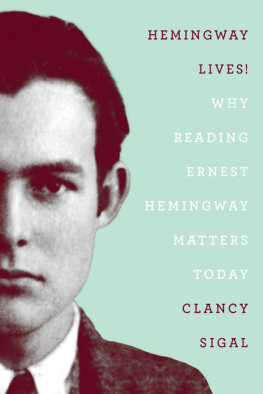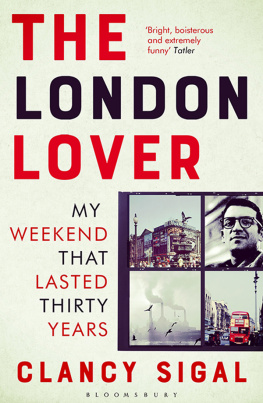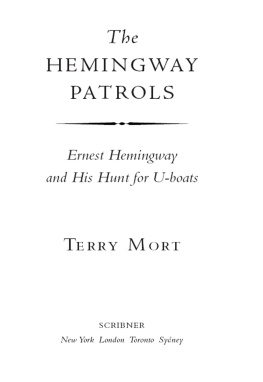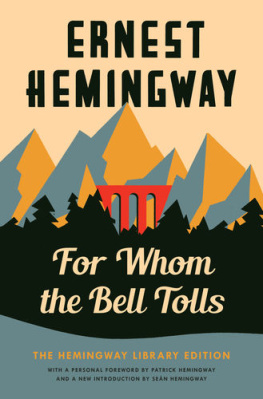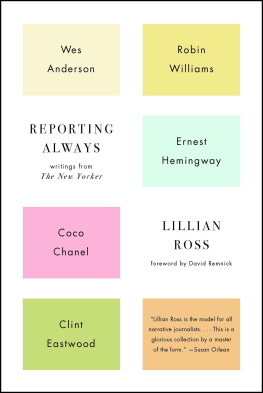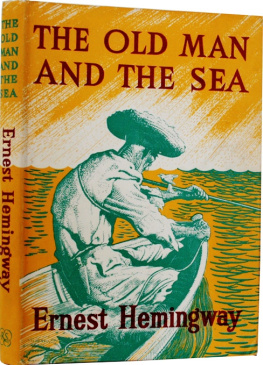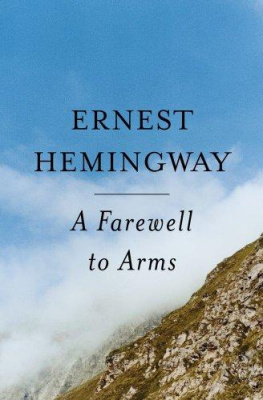
In this concise and sparkling account of the life and work of Americas most storied writer, Clancy Sigal presents a persuasive case for the relevance of Ernest Hemingway to readers today.
Sigal breaks new ground in celebrating Hemingways passionate and unapologetic political partisanship, his stunningly concise, no-frills writing style, and an attitude to sex and sexuality much more nuanced than traditionally assumed. Sigal insists that, simply for the pleasure provided by a consummate story teller, Hemingway is still as much a must-read as ever.
Though Hemingway Lives! will provide plenty thats new for those already familiar with Papas oeuvre, including substantial forays into his political commitments, the women in his life, and the astonishing range of his short stories, it assumes no prior knowledge of his work. Those venturing into Hemingways writing for the first time will find in Sigal an inspirational and erudite guide.
CLANCY SIGAL, a PEN Lifetime Achievement Award winner, is the author of Weekend in Dinlock, Going Away (a National Book Award runner-up), Zone of the Interior, The Secret Defector , and A Woman of Uncertain Character. He co-wrote the 2002 feature film Frida , as well as In Love and War about a young and wounded Hemingways passionate love affair with his nurse.


2013 Clancy Sigal
Published by OR Books, New York and London
Visit our website at www.orbooks.com
First printing 2013
All rights reserved. No part of this book may be reproduced or transmitted in any form or by any means, electronic or mechanical, including photocopy, recording, or any information storage retrieval system, without permission in writing from the publisher, except brief passages for review purposes.
Cataloging-in-Publication data is available from the Library of Congress.
A catalog record for this book is available from the British Library.
ISBN 978-1-939293-17-6 paperback
ISBN 978-1-939293-18-3 e-book
All images courtesy of the JFK Presidential Librarys Media Gallery
Cover design by Bathcat Ltd.
Cover photograph National Archives and Records Administration
This book was set in the typeface Garamond.
Typeset by Lapiz Digital, Chennai, India.
Printed by BookMobile in the United States and CPI Books Ltd in the United Kingdom. The U.S. printed edition of this book comes on Forest Stewardship Council-certified, 30% recycled paper. The printer, BookMobile, is 100% wind-powered.
INTRODUCTION
A recent item in the Billings, Montana, Gazette has a photograph of Sgt. Dan Baker, of Miles City, being deployed for a second time to Afghanistan. His wife and two daughters cling to him sobbing in the airport lobby. With emotions running at fever pitch all around him, the 39-year old father flipped through the pages of his e-book immersing himself in the words of Ernest Hemingways A Farewell to Arms , a semi-autobiographical novel about the events during the Italian campaigns of World War I almost a century ago.
Sgt. Baker may have only a vague idea of who Ernest Hemingway is. But its obvious the words mean something personal to him, as he and the ex-soldier-author have a shared experience, the experience of war:
In the late summer of that year we lived in a house in a village that looked across the river and the plain to the mountains. In the bed of the river there were pebbles and boulders, dry and white in the sun, and the water was clear and swiftly moving and blue in the channels. Troops went by the house and down the road and the dust they raised powdered the leaves of the trees. The trunks of the trees too were dusty and the leaves fell early that year and we saw the troops marching along the road and the dust rising and leaves, stirred by the breeze, falling and the soldiers marching and afterward the road bare and white except for the leaves.
Sgt. Baker, on his way to an unwinnable war, as Hemingway was nearly a hundred years ago, must have read the opening paragraph of A Farewell to Arms , and it likely touched him through the emotional truth of his own hairy situation.
It matters if you stumble across Hemingway by accident or as required reading. If Hemingway had known as a young man that his fate would be as a classroom Assigned Great Writer hed probably have shot himself long before he did in real life. I was lucky. At 15 I stole a copy of A Farewell to Arms from my local public library. A street pal had told me there was a lot of sex in it (he lied). The story read so differently from other books, especially the assigned ones, that at first I felt there must be a mistake with using such simple words in short sentences and easy-to-grasp imagery, the opposite of what my teachers had taught me.
Id had crushes on girls but had never fallen in love with a writer. I grabbed every Hemingway book I could get my hands on, even shoplifting from the librarys special section designated ADULTREQUIRES CHIEF LIBRARIANS PERMISSION TO CHECK OUT. Chicago library officials shared the view of Hemingways father, the respectable Dr. Clarence Hemingway, that his sons books were not fit for polite society. This only made Hemingway more glamorous to me because forbidden. His world seemed both more realistic and more romantic than my usual literary diet of Robin Hood, King Arthurs knights, The Little Shepherd of Kingdom Come, and Treasure Island, illustrated by N.C. Wyeth. Hemingways scenes of battles, love, bull fights, hunting, deep sea fishinghis realistic treatment of violence, not glamorizing it, appealed to both sides of me, the anti-war adolescent and soon-to-be-soldier. All I understood at 15 was that he was as easy and exciting to follow as my favorite movies, the latest Charlie Chan or Four Feathers . I loved how he put words together. Since then, Ive read and reread his books, articles, war correspondence, novels, and short stories, finding something newor new to be rejectedevery time. If tended, hes a plant that never stops growing.
Like many writers, Joan Didion among them, I have typed and retyped his stories in the hope of catching his disease. The FBI agents who once were a constant presence on my doorstep, even as they also shadowed Hemingway for much of his life, were amused by the sound of the keys like pistol shots of my Corona #3 typewriter. Whatcha doing in there, Clancy, one of them would mock through my locked screen door, you the next Hemingway? If only.
If youve seen the actor Corey Stolls caricature in Woody Allens Midnight in Paris or Clive Owen and Nicole Kidman in HBOs Hemingway and Gellhorn , you may think of Hemingway mainly in terms of his drunken buffoonery, jealous narcissism, or disloyalty to rival writers, being a slob and bully in his worst moments. Such portrayalsand his happy hobby of night clubbing with gossip columnistshave set in cement an image of Hemingway as a big-game hunting, hairy-chested, racist, gun-crazy hyper-macho who hates and fears women in equal parts and who kills himself when he can no longer write. You may also think he despised politics. Theres no left or right in writing only good and bad writing, he once said, thus contradicting his own history.
This chest-thumping Hemingway is real enough. But theres another quieter side to him too: bookish, bespectacled (due to hereditary bad eyes), generous to young writers, a literary explorer armed only with a #2 pencil and a Royal Corona #3 typewriter, who risked his life and mind trailblazing uncharted territory that should have been marked, as on medieval maps, Here Be Dragons. After publication of his first novel, The Sun Also Rises , a reviewer wrote in the Atlantic that Hemingway writes as if he had never read anybodys writing, as if he had fashioned the art of writing himself.
Next page
